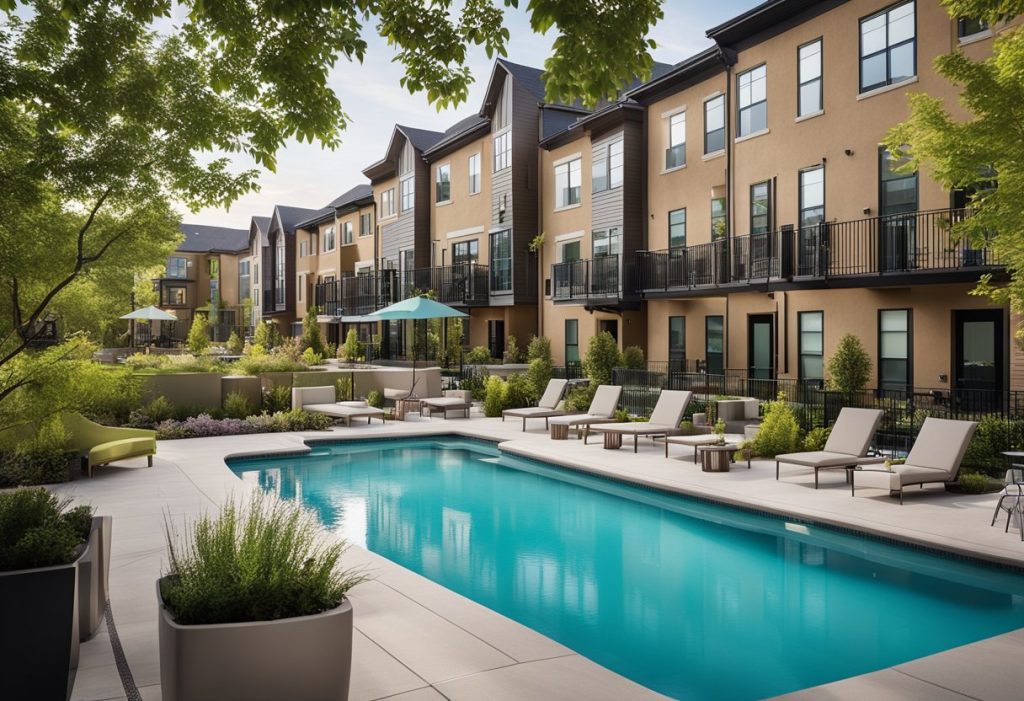Build-to-Rent Residents Seek Lower Rent Opportunities in 2025

Build-to-rent communities have reshaped the residential landscape in recent years, offering a unique blend of single-family home living with the flexibility of renting. As we navigate through 2025, the BTR market continues to evolve, driven by changing resident preferences and economic factors. A recent survey reveals that 36% of BTR residents now prefer renting their homes, a significant increase from 27% in 2023.
The John Burns Research & Consulting’s 2024 Build-to-Rent Resident Survey provides valuable insights into the current state of the BTR market. You’ll find that residents are increasingly price-sensitive, willing to relocate for better deals. This shift presents both challenges and opportunities for developers and operators in the BTR space.
As you explore the BTR landscape, you’ll discover that these communities offer spacious, well-designed properties catering to small families with children and pets. The appeal of BTR lies in its unique position within the residential rental market, providing privacy without shared walls or neighbors above or below.
Key Takeaways
- BTR residents show increased preference for renting, with 36% favoring this option in 2024.
- Price sensitivity is driving tenant decisions, prompting developers to focus on retention strategies.
- BTR communities offer unique living experiences, combining single-family home features with professional management.
The Price Sensitivity of Build-to-Rent Residents

Build-to-rent (BTR) residents are increasingly aware of their rental costs. A recent survey reveals that 43% of BTR residents are willing to move for a better price. This statistic highlights the importance of competitive pricing in the BTR market.
Several factors contribute to this price sensitivity. Many residents view BTR homes as a stepping stone to homeownership. They aim to save money on monthly rent to accumulate funds for a future down payment.
Financial flexibility is another key consideration. BTR properties often offer amenities and locations comparable to homeownership, without the long-term commitment of a mortgage payment. This appeals to those seeking quality housing with the ability to relocate as needed.
You’ll find that single-family rentals (SFR) and other BTR units are attracting residents from high-cost housing markets. These individuals seek more affordable options without sacrificing space or comfort.
To retain tenants, BTR property managers should:
- Monitor local rental market trends
- Offer competitive pricing
- Provide value-added amenities
- Maintain high-quality properties
By understanding and addressing price sensitivity, you can optimize occupancy rates and tenant satisfaction in your BTR investments. Keep in mind that while 43% may move for lower rent, 57% prioritize other factors, indicating room for differentiation beyond price alone.
Shifting Preferences in the Rental Market

The rental market is experiencing a notable shift in tenant preferences, particularly in the build-to-rent (BTR) sector. Recent data indicates a significant increase in renters who prefer their living situation, rising from 27% in 2023 to 36% in 2024.
This trend is reshaping the landscape for real estate investors and developers. You’ll find that BTR communities are gaining traction among various demographic groups:
- Young families
- Empty nesters
- Remote workers
These renters are drawn to the unique blend of amenities and flexibility that BTR properties offer:
- Private outdoor spaces
- Community features
- High-quality finishes
Single-family rentals, in particular, are seeing increased demand. They provide the space and privacy of a traditional home without the long-term commitments of ownership.
As an investor, you should consider the growing appeal of:
- Duplexes
- Row homes
- Small lot homes
These options cater to the evolving needs of renters seeking a single-family home experience without the financial burden of purchasing.
The shift towards BTR communities is also influenced by changing work patterns. With remote work becoming more prevalent, you’ll notice increased interest in properties located in exurban areas, offering both space and affordability.
Strategies for Developers and Operators

As a developer or operator in the build-to-rent sector, your success hinges on effective strategies. Focus on creating professionally managed communities that cater to residents’ needs and preferences.
Competitive pricing is crucial. Analyze local market trends and set rents that attract tenants while ensuring profitability. Consider offering move-in specials or flexible lease terms to stand out.
Amenities play a vital role in tenant retention. Prioritize features that resonate with your target demographic, such as fitness centers, co-working spaces, or pet-friendly areas.
Implement innovative approaches to add value without increasing rent. This might include partnerships with local businesses for resident discounts or offering services like package acceptance and storage.
Streamline your leasing office operations. Invest in user-friendly property management software to enhance efficiency and improve tenant communication.
Consider sustainability initiatives. Energy-efficient appliances and green spaces can attract environmentally conscious renters and potentially reduce operating costs.
Stay attuned to investor demand. Understanding what institutional investors seek can help you tailor your development and management strategies.
Optimize your property tax strategy. Work with tax professionals to ensure you’re taking advantage of all available deductions and credits.
The Future of the BTR Market
Build-to-rent (BTR) communities are poised for significant growth in the coming years. You can expect outsized rent growth and low vacancy rates to continue attracting investors to this market segment.
As housing shortages persist in many areas, BTR developments will likely play a crucial role in addressing demand. You’ll see these communities increasingly serve as a solution to density and affordability challenges.
Rent trends in the BTR sector are projected to outpace traditional multifamily properties. In Q2 2024, BTR rent growth was 1.5% year-over-year, compared to 0.3% for multifamily. This trend is expected to continue as the market absorbs new supply.
Key factors influencing the BTR market’s future include:
- Population migration patterns
- High interest rates impacting homeownership
- Millennial preferences for flexible living arrangements
You should anticipate BTR communities to evolve, offering:
- Enhanced amenities
- Smart home technologies
- Sustainable design features
The BTR sector’s growth may impact the broader housing market by:
- Providing alternatives to traditional homeownership
- Influencing single-family home construction rates
- Potentially affecting resale home values in some areas
As an investor, staying informed about these trends will be crucial for making strategic decisions in the evolving BTR landscape.
Frequently Asked Questions

Build-to-rent properties offer unique advantages and challenges for investors. These developments cater to resident needs while impacting local real estate markets. Understanding the key aspects can help you make informed investment decisions.
What are the advantages and disadvantages of living in build-to-rent properties?
Build-to-rent homes often provide high-quality amenities and modern finishes. You’ll find energy-efficient features and well-designed spaces that enhance the living experience.
These properties typically offer professional management and maintenance services. This can save you time and hassle compared to traditional rentals.
On the downside, build-to-rent communities may have higher rental rates due to their premium features and services.
How does build-to-rent housing differ from traditional rental properties?
Build-to-rent developments are purpose-built for renting. They often feature cohesive designs and community-oriented amenities.
These properties are usually owned and managed by a single entity. This can lead to more consistent policies and maintenance standards across the community.
Traditional rentals may offer more varied housing options and locations. Build-to-rent communities tend to be more uniform in style and amenities.
What should potential investors consider when evaluating build-to-rent real estate investment trusts (REITs)?
When evaluating build-to-rent REITs, consider the company’s portfolio diversity and geographic spread. Look for REITs with properties in growing markets with strong rental demand.
Assess the REIT’s management team and their track record in the build-to-rent sector. Experienced leadership can be crucial for navigating this relatively new market segment.
Analyze the REIT’s financial health, including occupancy rates, rental income growth, and debt levels. These factors can impact the potential returns on your investment.
In what ways do build-to-rent developments cater to the needs of residents?
Build-to-rent communities often offer spacious layouts suitable for families. You’ll find homes designed to accommodate children and pets comfortably.
These developments frequently include shared amenities like fitness centers, parks, and community spaces. Such features can enhance residents’ quality of life and foster a sense of community.
Build-to-rent properties often provide responsive maintenance services. This can be particularly appealing if you prefer not to handle property upkeep yourself.
How do build-to-rent properties impact the local real estate market?
Build-to-rent developments can increase the supply of quality rental housing in an area. This may help meet demand in markets with housing shortages.
These properties can potentially compete with traditional home sales. This could impact home prices and affect the local real estate market dynamics.
Build-to-rent communities may attract new residents to an area. This can stimulate local economic growth and development.
What are the long-term prospects for build-to-rent as an investment strategy?
The build-to-rent sector has shown strong growth since the Great Recession. Single-family rentals have accounted for a significant portion of rental housing stock gains.
Demographic trends, such as millennials starting families, may continue to drive demand for single-family rentals. This could support long-term growth in the build-to-rent sector.
As with any real estate investment, market conditions and location will play crucial roles in determining long-term success. Careful market analysis and property selection remain essential.
Wondering if you’re charging enough rent? Here’s how to know for sure.
Make data-driven rental property decisions with real-time market insights from RentCast. Use code BIGDEAL for 20% off your subscription!

Discover the secret to stress-free property management with How To Find & Keep Great Tenants. This essential guide reveals proven strategies for attracting high-quality renters and creating long-term, mutually beneficial relationships.
But finding great tenants is only half the battle. Uncover the art of tenant retention, from creating a positive living environment to addressing concerns promptly and professionally.
With this book, you’ll transform your rental property into a sought-after home that tenants won’t want to leave. Minimize vacancies, reduce turnover costs, and maximize your investment’s potential by mastering the skills to find and keep exceptional tenants.
Get your copy now from your favorite bookseller:
- Amazon (non-Premium Edition, does not include Investment Real Estate Analysis: A Case Study, available in paperback only)
- Books2Read for Apple, Barnes & Noble, Kobo, Scribed, and 8 more sellers with both eBook and paperback options available (Premium Edition)
- Payhip as a downloadable PDF (Premium Edition)
Ready to move to the next level?
- Visit our learning center
- Learn more about our consulting services